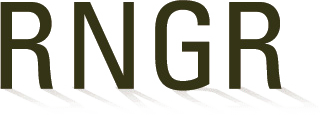
Aglaia (samoensis)
|
Aitasi Sameli Forestry Nursery Manager Endangered Plant Program P.O. Box 5319 Pago Pago, American Samoa 96799 www.brenau.edu |
|
| Family Scientific Name: | Meliaceae | ||
|---|---|---|---|
| Family Common Name: | Melia family | ||
| Scientific Name: | Aglaia samoensis A.Gray | ||
| Common Name: | Lagaali | ||
| Species Code: | AGLSAM | ||
| Ecotype: | American Samoa | ||
| General Distribution: | Small tree occasional in lowland to montane forest, reported from 20 to 1030 m elevation in Samoa. Endemic, or perhaps also found on Uvea. | ||
| Propagation Goal: | plants | ||
| Propagation Method: | seed | ||
| ProductType: | Container (plug) | ||
| Time To Grow: | 0 | ||
| Propagule Collection: | For optimum germination, collect seeds that are mature or ripe. If seeds are gathered when the embryo is insufficiently developed, the seed is apt to be thin, shriveled, poor in quality and short-lived, impairing germination. | ||
| Propagule Processing: |
1. Ripen seeds in a plastic bag. Seeds are easier to clean when the pulp is softened. 2. Once ripened, remove the flesh to prevent spoilage.One way is to put the seeds in a large bowl of water, then massage the seeds by hand to separate the seeds from the pulp. The heavy, good seeds will sink to bottom. The lighter pulp and empty seeds will float to the top and can be poured off. 3. Wash the seeds thoroughly. 4. Dry them on a paper towel. |
||
| Pre-Planting Treatments: | Seeds from wet habitats generally do not require any pre-treatment. They need to have the pulp completely removed from the seeds or they will succumb to fungi and molds, and many rot. Pre-treating seeds with fungicides can help prevent seed and seedling diseases. | ||
| Growing Area Preparation/ Annual Practices for Perennial Crops: |
Greenhouse and outdoor nursery environment. The germination medium must retain moisture, yet provide good drainage and aeration. Different blends of soil mix, perlite and cinder are used. A- 1 parts perlite to 1 part sterilized soil B- 1 parts fine cinders to 1 part sterilized soil. Sowing Method: Transplanting emergents |
||
| Establishment Phase: |
After 2 to 4 true leaves have appeared, the seedlings should be transplanted. Remove the seedlings from the medium with your finger, a pencil, or your hand by moving in under the medium and seedling. Handle the seedling by their leaves, not, which is easily damage by pressure. Be very careful to avoid root damage. Choose a container according to the size and structure of the root system of plant. Fill the container with one third its volume of growing medium, add the seedlings, then add the remaining media, cover roots, and tap down gently to stabilize the plant. Water thoroughly after transplanting. It is critical that the media drains freely. To test this make that water does not sit on top of the media when watered. Keep transplanted seedlings in a covered, shaded area for 1 to 2 weeks. To prevent post-emergence damping-off disease, add a thin layer of perlite to the surface or keep the media somewhat dry on top. A recommended growing medium is: 2 parts sterilized soil to 2 parts perlite (v:v). Plants are sensitive to high doses of fertilizer. Use a balanced fertilizer such as triple 8 and triple 20 N:P:K at one half the recommended rate. Micro nutrients are also helpful. Add the fertilizer when mixing the medium, do not apply as a top dressing to the surface after potting. |
||
| Active Growth Phase: | Once a month, foliar feed the plants with a complete low dose, liquid fertilizer or as needed. | ||
| References: |
Whistler, A. 2000. Trees of Polynesia. Isle Botanica. December 2000. Whistler, A. 2000. Annotated Checklist of the Vascular Flora of American Samoa. |
||
Citation:
Sameli, Aitasi. 2004. Propagation protocol for production of Container (plug) Aglaia samoensis A.Gray plants Endangered Plant Program Pago Pago, American Samoa. In: Native Plant Network. URL: https://NativePlantNetwork.org (accessed 2025/11/02). US Department of Agriculture, Forest Service, National Center for Reforestation, Nurseries, and Genetic Resources.



